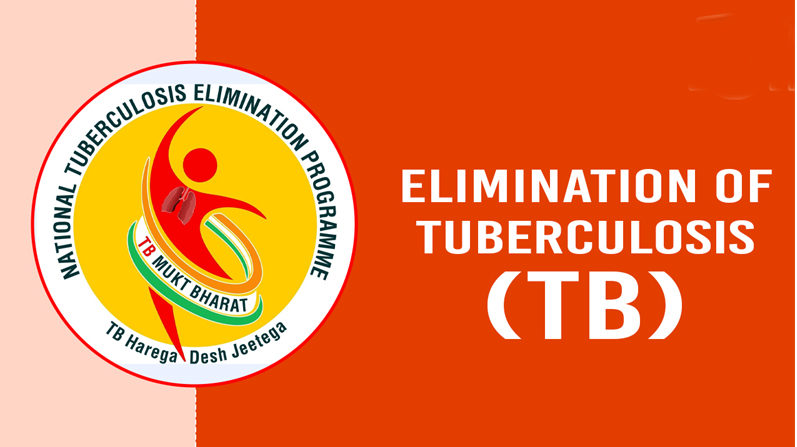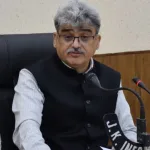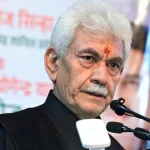At the recently concluded World Health Assembly at Geneva, the announcement of India’s trachoma-free certification by the World Health Organization (WHO) is more than just a public health triumph; it’s a profound testament to the power of a collective national will. This achievement, born from decades of proactive efforts in hygiene, cleanliness, and awareness, offers a compelling blueprint for how India is now tackling another ancient scourge, tuberculosis (TB). Indeed, the echoes of the trachoma victory resonate strongly in the nation’s ambitious drive towards a TB-Mukt Bharat.
Just as a sustained focus on fundamental public health principles underpinned the fight against trachoma, the current war on TB is being waged with an equally comprehensive, and crucially, deeply ingrained Jan Bhagidari —people’s participation—philosophy. This isn’t merely a catchphrase; it’s the very bedrock of the government’s strategy. The recent 100-day TB elimination campaign provides a vivid illustration of this resolve. The sheer scale of the undertaking, with 12.97 crore people screened and over 7.19 lakh TB patients notified, is staggering.
Yet, what truly sets this effort apart is the parallel commitment to dismantling the social symptoms of TB. The organization of 13.46 crore “Ni-kshay Shivirs,” or community screening and awareness camps, speaks volumes about a recognition that effective treatment extends beyond medicine to encompass the eradication of stigma, myths, and misinformation.
Jan Bhagidari, in the context of TB elimination, is a vibrant, multi-faceted phenomenon. It’s an ecosystem that supports the tireless dedication of community health workers like ASHAs and Anganwadi workers, who are the most valuable point of contact in remote villages. They are the unsung heroes identifying presumptive cases, ensuring treatment adherence, and providing vital nutritional support. Building on this foundation, the mobilization of resources by local self-help groups, NGOs, and faith-based organizations further strengthens this community-led effort by establishing critical patient support networks.
Before these frontline warriors even step onto the field, however, the ground is already being prepared by India’s dynamic media ecosystem. The catchy slogan for the 100-day campaign, ‘Jan Jan Ka Rakhe Dhyaan, TB-Mukt Bharat Abhiyaan’, is not just a clever turn of phrase; it’s a national clarion call, resounding across television, radio, and public spaces in myriad local languages.
This comprehensive awareness generation has been significantly bolstered by unwavering political will, with the highest echelons of government, including the Honourable Prime Minister, consistently championing India’s progress. And under the aegis of the Honourable Minister of Health and Family Welfare, a “whole-of-government” approach, fostering collaborations across ministries and proactive efforts at the state level, signifies a unified national commitment.
Another cornerstone of India’s fight against TB lies in the pervasive reach of its Panchayati Raj Institutions. These over 2,50,000 local governments are pulling TB out of the shadows, normalizing conversations, and engaging sarpanches and gram pradhans as public health champions. What was once taboo is now openly discussed, and more importantly, acted upon, at the village level.
Media as a public health ally
The media’s role in this monumental endeavour is indispensable. By spotlighting governmental interventions, social protection schemes, and inspiring stories of community-led initiatives, it cultivates public confidence and encourages individuals to step forward for care. This decentralized, people-centric model finds its most profound expression in the novel Ni-kshay Mitra initiative.
The extensive media coverage around the Indian Council of Medical Research’s evidence linking nutrition and TB treatment outcomes ignited a powerful wave of community action, bringing corporations, NGOs, individuals, and even children forward to become Ni-kshay Mitras. The distribution of over 3.06 lakh food baskets to TB patients and their families by more than 1.05 lakh Ni-kshay Mitras during the recent 100 days campaign vividly highlights the far reaching impact of this approach at the grassroots level.
Perhaps most powerfully, the emergence of TB survivors as champions has transformed the narrative. These individuals, having successfully navigated their own journeys of recovery, are now integral allies, offering empathy, guidance, and living proof that TB is entirely curable. Their structured training – where they understand the science of TB, the ways in which it affects a patient psychosocially, and techniques to build community networks – and public sharing of experiences inspire treatment adherence and build crucial community empathy.
As India accelerates towards a TB-Mukt Bharat, the continued synergy between these key catalysts and the spirit of Jan Bhagidari will be paramount. Their combined power to inform, inspire, and mobilize is undoubtedly India’s greatest asset.
By strategically leveraging technology, fostering innovative communication strategies, and deepening community involvement, India is not merely striving to eliminate a disease; it is forging a healthier, more engaged society where every citizen is aware, every patient is supported, and where TB, truly, becomes a relic of the past.
(The Author is Additional Director General (Media), Ministry of Health and Family Welfare, Government of India. Courtesy: PIB)








